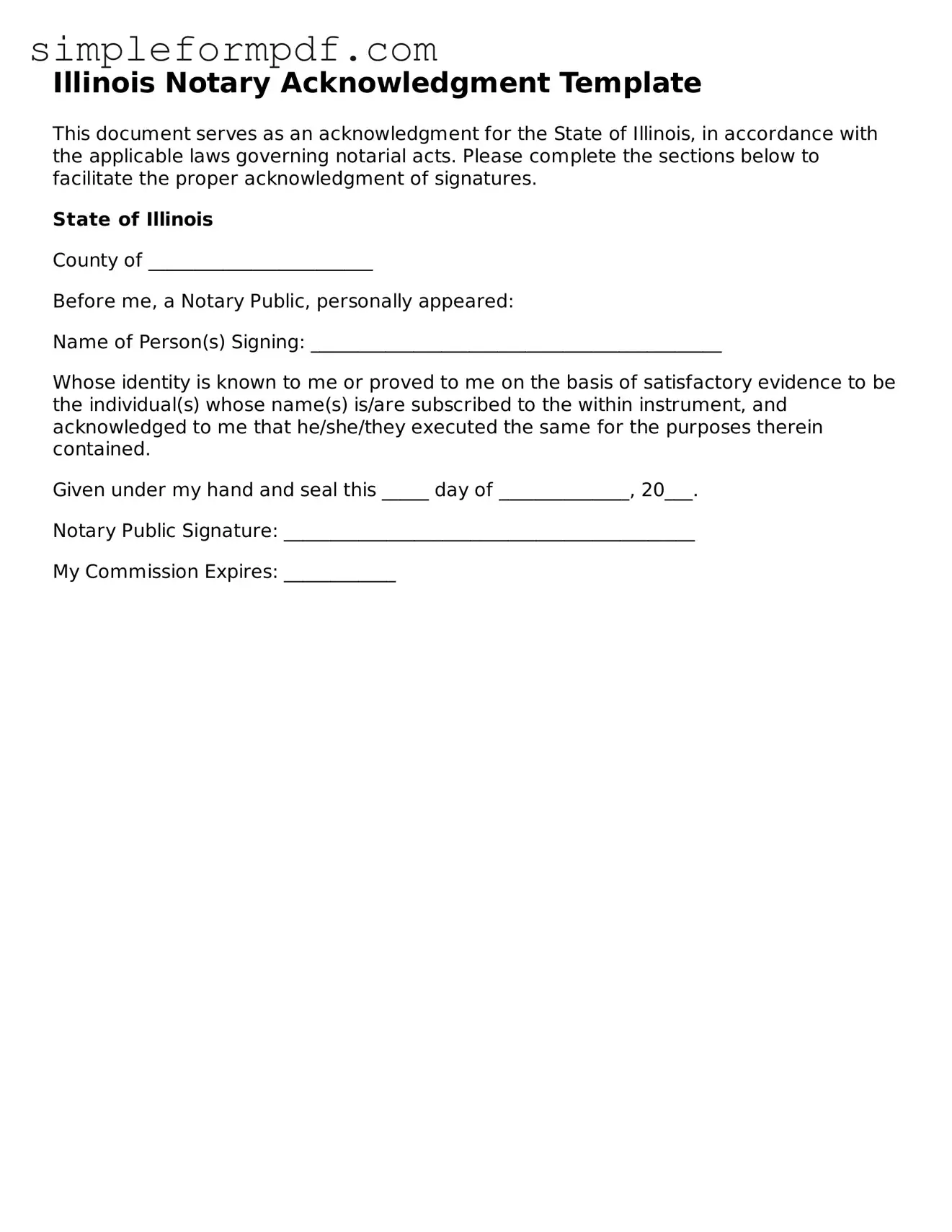Free Notary Acknowledgement Form for the State of Illinois
The Illinois Notary Acknowledgement form is a legal document used to confirm that a person has willingly signed a document in the presence of a notary public. This form serves to protect the integrity of the signing process and ensures that the signer's identity is verified. For those needing to complete this important step, fill out the form by clicking the button below.
Launch Editor
